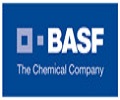-
Email Us
- Top Reports
Global Primary Surveillance Radar Market Key Success Factors 2025-2032
Price
Single User License 3300
Multi User License 6000
Corporate License 7200
The Primary Surveillance Radar (PSR) market plays a pivotal role in ensuring air traffic safety and efficiency by providing critical surveillance data for both civil and military aviation. PSR systems operate by transmitting electromagnetic waves that reflect off aircraft, enabling air traffic control authorities to continuously monitor aircraft positions and movements, even in challenging weather conditions. This capability not only maximizes safety but also enhances operational efficiency in busy airspace environments. According to a recently published report by STATS N DATA, the PSR market has experienced steady growth, with current market size estimated to be around $XX billion, reflecting a significant increase from historical data. The demand for advanced radar systems is primarily driven by the expansion of air travel, the need for better air traffic control infrastructure, and increasing investments in modernizing existing systems.
As the aviation industry evolves, the PSR market is projected to witness robust growth in the coming years, with estimates suggesting a compound annual growth rate (CAGR) of approximately XX% from 2023 to 2030. Key trends include the integration of advanced signal processing technologies and automation in radar systems, which provide enhanced accuracy and reliability. Major drivers of this growth include the increasing demand for safe and efficient air travel, government initiatives to upgrade air traffic management systems, and the rising focus on national security measures. However, the market does face certain restraints, such as high installation and maintenance costs and regulatory hurdles that could impact adoption rates.
Despite these challenges, significant opportunities lie ahead, particularly in emerging markets where air traffic is expanding rapidly. Technological advancements, including the development of solid-state radars and the use of artificial intelligence in radar data analysis, are set to revolutionize the landscape, making PSR systems more effective and cost-efficient. By leveraging these innovations, stakeholders in the Primary Surveillance Radar market can enhance operational capabilities and meet the growing demands of the aviation sector. As the industry moves toward more integrated and automated solutions, the PSR market is likely to play a critical role in shaping the future of aerial surveillance and air traffic management.
In today's fast-paced business landscape, keeping up with the latest developments in the PRIMARY SURVEILLANCE RADAR MARKET is crucial for maintaining a competitive edge. Our comprehensive market research report provides businesses and investors with deep insights into the Global Primary Surveillance Radar Industry. This report extends beyond basic data analysis, offering advanced forecasts, revenue projections, and future trends from 2024 to 2031. It serves as a valuable guide for decision-makers navigating the complexities of this dynamic market.

Market Overview and Historical Perspective
This market research report presents a detailed analysis of the current size of the Primary Surveillance Radar Market. By examining historical data, it uncovers key industry insights and maps the market's evolution over time. This thorough review provides valuable perspectives on the development of the Primary Surveillance Radar Market, laying a robust foundation for understanding its present state. By studying past trends and patterns, the report offers insights that help forecast future growth, enabling stakeholders to adapt to upcoming changes and seize emerging opportunities.
The report also delivers expert predictions and a detailed analysis of the future Primary Surveillance Radar Ecosystem and its trends. These growth projections offer a clear view of the market's anticipated trajectory, helping stakeholders navigate and capitalize on new opportunities. The analysis highlights key growth drivers, such as technological innovations and increasing demand across various sectors, while also considering potential challenges like regulatory issues and economic uncertainties.
Moreover, the report identifies several avenues for future growth, providing a strategic perspective on both challenges and opportunities within the Primary Surveillance Radar Market. By understanding these market dynamics, stakeholders can make well-informed decisions and develop effective strategies to thrive in this rapidly changing environment.
Market Segmentation
The Primary Surveillance Radar Market is segmented into various categories, including product type, application/end-user, and geography. The segmentation includes:
Type
- S-Band
- L-Band
Application
- Commercial
- Military
Note: Market segmentation can be customized upon request to better meet specific business needs and provide targeted insights.
This section of the report delves into the detailed segmentation of the market, outlining the various components and their roles in shaping the overall market dynamics. Each segment is evaluated based on its size and growth rate, helping identify areas of rapid expansion and those with stable growth. This analysis is crucial for pinpointing the key segments that drive the market forward and have significant potential for future development.
The report also features a Primary Surveillance Radar Market attractiveness analysis, assessing the appeal of each segment. This evaluation considers factors such as market potential, competitive intensity, and growth prospects, providing a well-rounded view of the most promising segments for investments and strategic initiatives. Identifying these opportunities allows investors and organizations to allocate resources more effectively, maximizing their return on investment.
Competitive Landscape
Key players profiled in this report include:
- Indra Sistemas
- Leonardo
- Thales Group
- Raytheon
- L3Harris
- CETC
- Eldis Pardubice
- Easat Radar Systems
- T-Cz
- Intelcan
The competitive landscape of the Primary Surveillance Radar industry is highly dynamic, with major players consistently striving to secure their positions and expand their influence. The report provides a comprehensive overview of this landscape, detailing the key players in the Primary Surveillance Radar Market and their market shares, giving a clear understanding of the major participants and their roles within the industry.
The report also includes a SWOT analysis for these key competitors, evaluating their strengths, weaknesses, opportunities, and threats. This comprehensive evaluation provides a thorough perspective on the competitive dynamics and strategic positioning of these players. Understanding the strengths and weaknesses of these competitors enables stakeholders to identify areas for improvement and devise strategies to gain a competitive advantage.
Recent Developments
The report covers significant recent developments in the Global Primary Surveillance Radar Market, including mergers, acquisitions, partnerships, and product launches. These activities have significantly shaped the competitive landscape and influenced trends within the Primary Surveillance Radar industry. Staying informed about these developments allows stakeholders to anticipate market shifts and adjust their strategies to align with evolving market dynamics.
Additionally, the research report features a benchmarking analysis of key products and services. By comparing these offerings, the analysis highlights their performance and market positioning. This comparison is essential for identifying industry best practices and areas that need improvement. These insights are invaluable for stakeholders aiming to enhance their offerings and maintain competitiveness in the market.
Technological Advancements and Future Disruptions
Technological advancements and innovations are critical drivers of change in the Global Primary Surveillance Radar Market. Our report highlights the latest developments in this area, showcasing how recent technological progress and innovative solutions are reshaping the Primary Surveillance Radar industry landscape.
Industry Dynamics and Market Structure
The report also provides a detailed examination of the overall structure and dynamics of the Primary Surveillance Radar industry. This analysis offers a clear view of how the industry operates and evolves, highlighting key components and their interactions. Understanding these elements enables stakeholders to identify opportunities for collaboration and innovation, which are essential for driving market growth and development.
Competitive Analysis Using Porter's Five Forces
Our Primary Surveillance Radar Market report employs Porter's Five Forces Analysis to evaluate the competitive landscape. This analysis examines the bargaining power of buyers and suppliers, the threat of new entrants and substitute products, and the level of competitive rivalry. This strategic framework is instrumental in identifying the factors that influence the industry's profitability and competitiveness, providing stakeholders with critical insights for informed decision-making.
Value Chain Analysis
The report includes a comprehensive value chain analysis, tracing the path from suppliers to end-users. This analysis, supported by detailed market studies, offers insights into each phase of the process. It highlights where value is added and identifies potential areas for efficiency improvements or strategic adjustments. By optimizing the value chain, stakeholders can enhance their operational efficiency and secure a competitive edge.
Customer Preferences and Market Trends
The report also identifies key customer preferences and trends, providing clarity on what consumers expect from products and services. Understanding these preferences helps businesses anticipate market trends and tailor their offerings accordingly. By aligning their strategies with customer needs, stakeholders can improve customer satisfaction and drive business growth.
Regulatory Environment
This comprehensive report emphasizes the key regulations and standards that impact the Primary Surveillance Radar Market, offering an in-depth overview of the legal and regulatory framework governing the industry. This information is essential for understanding the rules and guidelines that market participants must follow. Staying current with regulatory changes enables stakeholders to maintain compliance and avoid potential legal complications.
The report also examines the impact of recent regulatory modifications in the Primary Surveillance Radar industry, evaluating how these changes shape the market and affect its stakeholders. Additionally, it equips stakeholders to anticipate potential challenges and adjust their strategies accordingly. Understanding the regulatory landscape empowers stakeholders to make well-informed decisions and formulate strategies that minimize risks while maximizing opportunities.
The report further details the compliance requirements for participants in the Primary Surveillance Radar Market, outlining essential steps for adhering to regulations and standards. Grasping these compliance demands is vital for maintaining legal and operational integrity within the market. Emphasizing compliance helps stakeholders build trust among customers and enhance their standing in the marketplace.
Market Entry Strategy
Entering the Primary Surveillance Radar industry presents several challenges, including high barriers and competitive pressures. This report identifies the primary obstacles that new entrants must navigate to successfully penetrate the market. These barriers include substantial capital requirements, stringent regulatory standards, and intense competition from established players.
The report also outlines critical success factors for new entrants in the Primary Surveillance Radar market, covering essential aspects like innovation, effective marketing strategies, strategic partnerships, and a strong value proposition. By focusing on these key elements, new entrants can effectively manage the complexities of the market and significantly improve their prospects for success.
Additionally, the report offers strategic recommendations for market entry, providing practical advice on market positioning, customer acquisition strategies, and differentiation tactics. Tailored to assist new entrants in establishing a robust market presence and competitive edge, these strategies enable them to overcome entry barriers and capitalize on opportunities within the Primary Surveillance Radar Market.
Economic Indicators and Risk Analysis
This report explores the impact of macroeconomic factors on the Primary Surveillance Radar Market, such as GDP growth, inflation rates, and employment trends. The analysis offers stakeholders a thorough understanding of the broader economic environment and its influence on the market, aiding in informed decision-making.
The report also examines identified risks and uncertainties within the Primary Surveillance Radar Market, highlighting potential challenges to market stability and growth. These risks include economic volatility, regulatory shifts, and intense market competition. By understanding these risks, stakeholders can develop strategies to mitigate them and strengthen market resilience.
Moreover, the report provides specific strategies for mitigating these identified risks. The section on impact assessment and mitigation offers actionable recommendations that help Primary Surveillance Radar Market participants manage risks effectively and maintain stability. By proactively addressing these risks, stakeholders can safeguard their interests and support sustainable growth.
Investment Analysis
This research evaluates key suppliers and distributors in the Primary Surveillance Radar Market, highlighting the main entities involved in product provision and distribution. The report offers insights into their capabilities, reliability, and strategic significance within the supply chain. Understanding these dynamics allows stakeholders to optimize their operations and strengthen their market positions.
Additionally, the report identifies prime investment opportunities and offers strategic recommendations. It provides insights into areas with significant potential for high returns, helping investors make informed decisions about resource allocation for optimal impact. Strategic investments in these high-potential areas can significantly increase profitability and stimulate market growth.
The report also includes a comprehensive analysis of return on investment (ROI) and financial projections. This analysis is crucial for assessing the expected profitability of investments and crafting informed financial strategies. Understanding these financial forecasts is essential for evaluating potential returns and associated risks of various investment avenues. By leveraging data-driven investment decisions, stakeholders can maximize their returns and achieve their financial objectives.
Furthermore, the report includes feasibility studies for potential new projects or ventures. These studies evaluate the viability of new endeavors by analyzing market demand, cost estimates, and potential revenue. Such evaluations ensure that investors can make well-informed decisions about pursuing new opportunities. Engaging in feasible projects allows stakeholders to expand their market presence and drive business growth.
Technological and Innovation Insights
The Primary Surveillance Radar Market report explores emerging technologies and their potential to significantly impact the market, highlighting how these advancements are setting the stage for the industry's future. This section emphasizes innovations that could disrupt the market landscape, creating new opportunities for growth and innovation.
Additionally, the report provides a detailed analysis of the innovation landscape and research and development (R&D) activities within the Primary Surveillance Radar Market. It examines ongoing R&D efforts and the overall state of innovation, offering a comprehensive view of how companies are driving progress and maintaining competitiveness. This analysis is crucial for understanding the role of innovation in market growth and identifying areas for strategic investment.
Furthermore, the report explores the potential of disruptive technologies within the Primary Surveillance Radar Market. These technologies have the capacity to reshape the industry, creating new opportunities and challenges. By staying informed about these emerging technologies, stakeholders can proactively adjust their strategies and leverage innovation to secure a competitive advantage.
Geographic Analysis
The report delivers a thorough geographic analysis of the Primary Surveillance Radar Market, offering insights into regional trends and opportunities. This section covers key regions, including North America, Europe, Asia-Pacific, Latin America, and the Middle East & Africa. Understanding these regional dynamics is crucial for identifying growth opportunities and tailoring strategies to specific markets.
Regional Insights
The analysis also highlights regional trends and developments, emphasizing the most significant market drivers and challenges in each area. By understanding these regional dynamics, stakeholders can make informed decisions about market entry, expansion, and resource allocation.
Market Size and Growth Rate by Region
The report examines the market size and growth rate across different regions, providing a clear view of which areas are experiencing the most rapid growth. This information is vital for identifying key markets and planning strategic initiatives.
Emerging Markets and Opportunities
The report identifies emerging markets with high growth potential, offering strategic recommendations for capitalizing on these opportunities. Understanding these emerging markets is essential for stakeholders looking to expand their presence and tap into new growth areas.
Key Questions Addressed in This Report
This comprehensive report provides detailed answers to several pivotal questions, ensuring that stakeholders acquire a profound understanding of the Primary Surveillance Radar Market:
What is the Global Primary Surveillance Radar Market size, and what growth rate can be expected during the forecast period?
What are the key factors driving the growth of the Primary Surveillance Radar Market?
What challenges and risks does the Primary Surveillance Radar Market currently face?
Who are the major players in the Primary Surveillance Radar Market?
What are the current trends influencing the shares of the Primary Surveillance Radar Market?
What insights can be gleaned from applying Porter's Five Forces model to the Primary Surveillance Radar Market?
What global expansion opportunities are available in the Primary Surveillance Radar Market?
Why Invest in this Primary Surveillance Radar Market Report
Stay Informed:
This exclusive research study keeps you updated with the latest information on the competitive landscape, helping stakeholders understand the strategies and positions of key players in the market.
Access Analytical Data and Strategic Planning Methods:
The report provides comprehensive analytical data and strategic planning tools that empower stakeholders to make informed decisions and develop robust market strategies.
Deepen Understanding of Critical Product Segments:
Delve into the intricate details of crucial product segments with this report, gaining clear insights into their performance, emerging trends, and overall market potential.
Explore Market Dynamics Comprehensively:
This report thoroughly examines the various factors influencing market dynamics, providing an in-depth analysis of the drivers, challenges, opportunities, and constraints within the market.
Access Regional Analyses and Business Profiles of Key Stakeholders:
Featuring detailed regional analyses and profiles of key stakeholders, this major study offers insights into regional market conditions and the roles played by significant market participants.
Gain Exclusive Insights into Factors Impacting Market Growth:
Obtain exclusive insights into the factors that drive market growth, assisting stakeholders in anticipating changes and tailoring their strategies effectively.
Our market research report is an invaluable resource for investors and businesses seeking a deep understanding of the Global Primary Surveillance Radar Market. With comprehensive data, detailed analyses, and actionable insights, this report equips stakeholders with the knowledge they need to make informed decisions, develop successful strategies, and capitalize on the vast opportunities within the Primary Surveillance Radar industry. We recommend stakeholders leverage these insights to enhance their strategic planning and secure a competitive edge in the Primary Surveillance Radar Market.
Frequently Asked Questions
1 What global expansion opportunities are available in the Primary Surveillance Radar Market?
The Primary Surveillance Radar report identifies several regions, including North America, Europe, Asia-Pacific, and emerging markets, that present significant growth opportunities. It provides strategic recommendations for companies looking to expand their market presence globally.
2 Who are the major players in the Primary Surveillance Radar Market?
The report profiles the leading players in the Primary Surveillance Radar Market like Indra Sistemas, Leonardo, Thales Group, Raytheon, L3Harris, CETC, Eldis Pardubice, Easat Radar Systems, T-Cz, Intelcan providing a comprehensive SWOT analysis for each. It examines their market shares, strengths, weaknesses, and strategies, helping stakeholders understand the competitive landscape.
3 What years does this Primary Surveillance Radar Market Report cover?
The report covers the Primary Surveillance Radar Market historical market size for years: 2019, 2020, 2021, 2022 and 2023. The report also forecasts the Primary Surveillance Radar Industry size for years: 2024, 2025, 2026, 2027, 2028, 2029, 2030, and 2031
4 What challenges and risks do the Primary Surveillance Radar Market currently face?
The Primary Surveillance Radar Market faces several challenges, such as economic uncertainties, regulatory shifts, and intense competition. The report provides a risk analysis that identifies potential obstacles and offers strategies for managing them.
5 What insights can be drawn from applying Porter’s Five Forces model to the Primary Surveillance Radar Market?
The Porter’s Five Forces analysis provides valuable insights into the competitive dynamics of the Primary Surveillance Radar Market. It evaluates the bargaining power of buyers and suppliers, the threat of new entrants, the impact of substitutes, and the intensity of competitive rivalry.
6 What are the current trends influencing the Primary Surveillance Radar Market?
Current trends include technological innovations, strategic mergers and partnerships, and shifting consumer preferences. The report discusses how these trends are shaping the market and driving growth opportunities.
7 What competitive strategies are key players in the Primary Surveillance Radar Market using?
The report analyzes the competitive strategies of major players in the Primary Surveillance Radar Market, including mergers, acquisitions, and partnerships. It also looks at product innovations, helping stakeholders anticipate shifts in the market and stay competitive.










